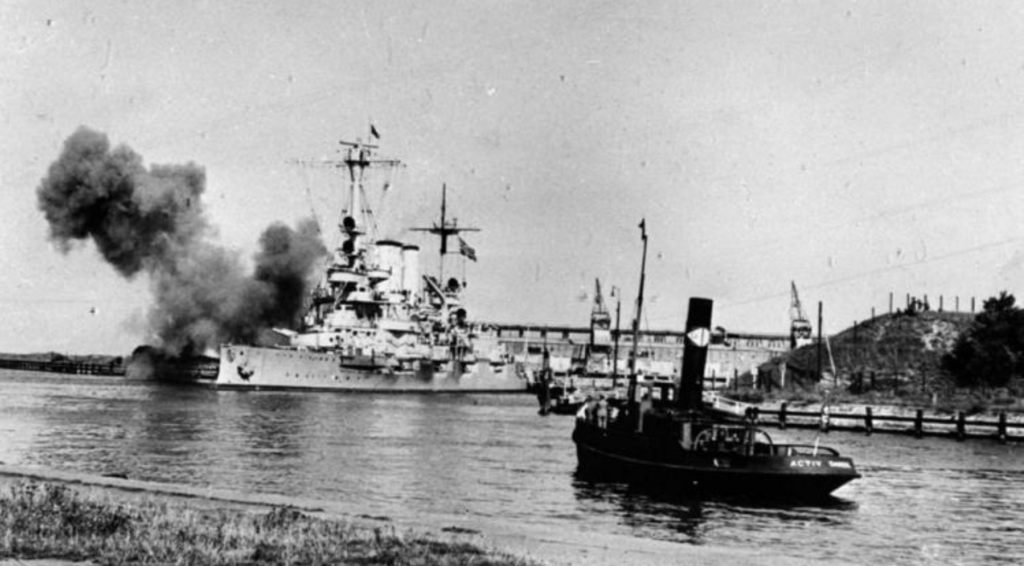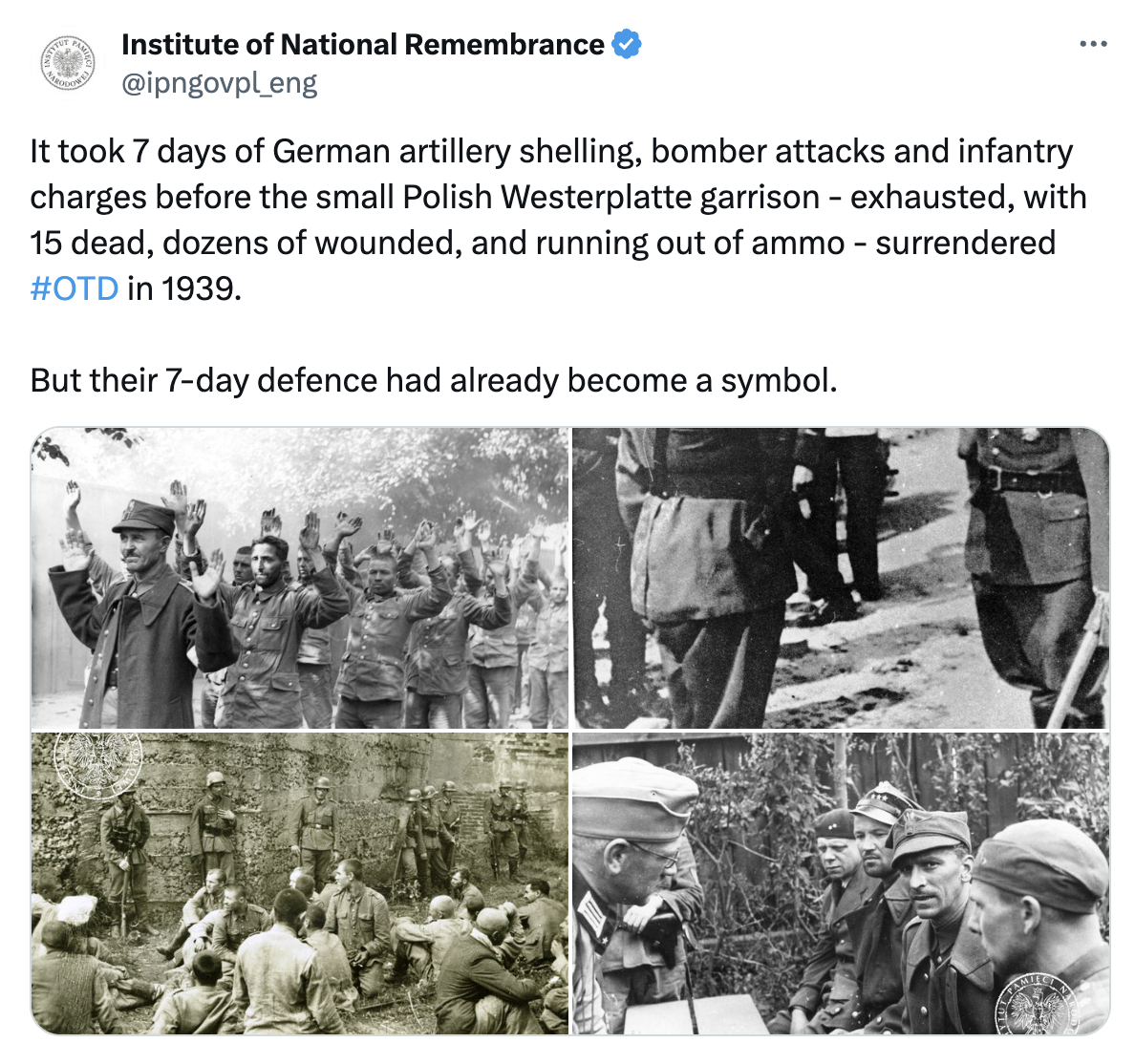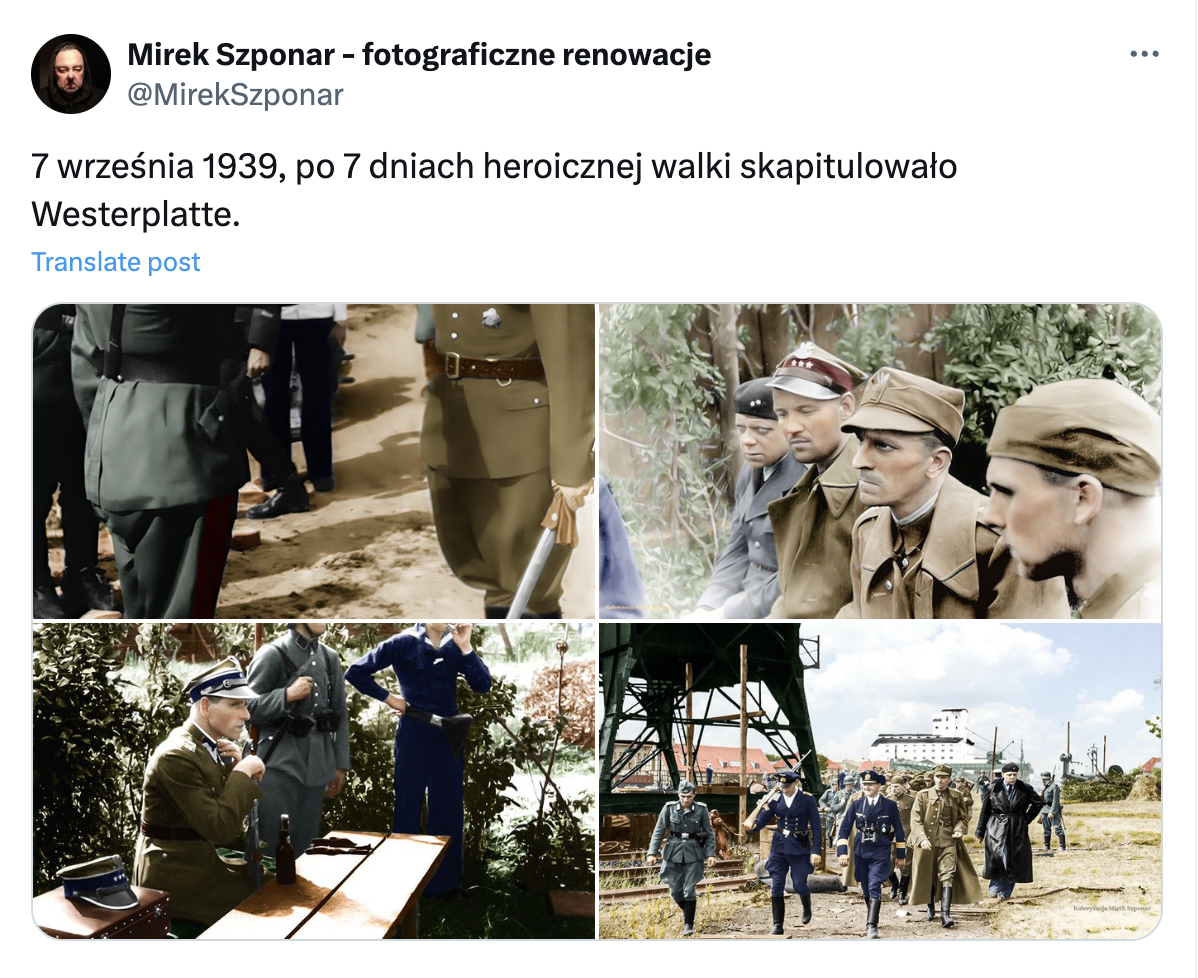At Westerplatte some 200 Polish soldiers stood against superior numbers of German infantry and the devastating firepower of the Schleswig Holstein battleship. Instead of a 12 hour battle for the ammunition depot, the garrison held its ground for 12 days becoming a symbol to all Polish soldiers who continued the defence war against the German war of aggression.
On the night of August 31-September 1, the Polish soldiers defending Westerplatte were on alert, with 30% of the garrison at battle positions and all other resting and ready for immediate alarm. Meanwhile, about 400 metres from the Polish outpost, a Kriegsmarine assault company came ashore from the deck of the “Schleswig-Holstein” battleship under the cover of darkness.
The battleship’s powerful guns were aimed at Westerplatte. The ship’s commander, kmdr. Kleikamp was ordered to attack on September 1, 4:45 a.m. The disembarked soldiers took positions for the attack at the wall surrounding the depot from the southeast. German sappers planted explosive materials in several places to make breaches in the fence just before the attack began.
At 4:43 a.m., the ship’s log recorded: “The ship moves to attack Westerplatte”.
The footage of the shelling remains one of symbolic depictions of the start of the 2 World War.
In September 1939, the depot was guarded by 182 soldiers, including five officers and a doctor (other sources report 205-210 soldiers, including more than 70 non-commissioned officers).
The German battleship “Schleswig-Holstein” opened fire from the bow turret of a 280-mm caliber artillery gun aimed at the Polish outpost. Its huge shells destroyed the dopot’s gate and parts of the wall. Moments later, the Polish outpost was attacked by a company of the SS-“Heimwehr Danzig” and a naval infantry assault unit (3rd Marine Company “Stoßtrupp”).
During the first attack on Westerplatte, the Germans concentrated their assault on the “Prom” outpost. The Polish soldiers placed a 75mm calibre cannon near the power plant and destroyed several German machine gun positions and fought back the attack on their positions. The cannon also destroyed the Danzig police outpost near the wall, and after that the Germans gave up and withdrew after just 90 minutes of fighting.
The next attack started with even longer shelling from “Schleswig” guns.
During the next days of the battle for Westerplatte, the increasingly exhausted Poles stood their ground (due to a shortage of men, it was impossible to relieve the manning of guardhouses and outposts), repelling German attacks and enduring artillery fire. The morale of the crew was briefly improved by the news that Great Britain and France had declared war on the Third Reich.
On the morning of September 7, the German artillery began another devastating shelling. On the same day, German reinforcements arrived at the battlefield. After an hour of shelling, the sappers went on the attack, using flamethrowers to set the forest on fire, followed by the infantry. Mortar shells severely damaged the defender’s positions but Polish machine guns once again held off the attackers.At around 10:15 a.m., Major Henryk Sucharski gave the order to surrender, explaining the decision with hopeless situation, the exhaustion of the soldiers, the dire condition of the wounded and crushing superiority of the enemy.
The commander of the German army, General Friedrich Eberhardt, in recognition of the valour of the Polish soldiers, allowed Major Sucharski to wear an official uniform and keep his sabre.
In the most terrible moments of the Polish defence, especially after the German air bombings of the 2 September some soldiers lost their fighting spirit but were cheered and led into battle with the support of brave Captain Franciszek Dąbrowski.
German losses in the Battle of Westerplatte, according to the Polish show approx. 300 killed soldiers and 700 to 1000 wounded. The Poles lost around 15 soldiers and 50 wounded.
The defenders of Westerplatte repelled 13 German assaults. Their attitude and determination gained not only fame, but also the demonstratively shown respect of the enemy, which was something unique in the entire September campaign in which the Wehrmacht showed acts of brutality to Polish soldiers, POWs and civilians. The Germans even referred to Westerplatte as a “little Verdun,” to illustrate the fury of their soldiers’ assault on the outpost.
During the battle the Polish radio mentioned the defence of Westerplatte as the symbol of Polish struggle.
The defence was also mentioned as a symbol of staying true to human principles by Saint John Paul 2, who said:
“Each of you also finds in life some kind of “Westerplatte”. Some dimension of tasks that he must undertake and fulfil. Some just cause for which you can’t help but fight. Some duty, duty from which you cannot evade. One cannot desert“.
The defence of the Westerplatte depot was depicted in a famous Polish war movie Westerplatte 1967 which is to this day considered one of the best Polish war movies.
Sources: Polskie Radio, X
Tomasz Modrzejewski
Photo: Wikipedia, public domain











